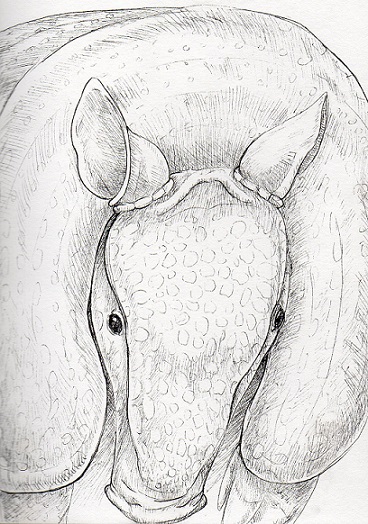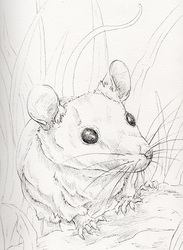Sign In
CloseTotem of the day is Armadillo! What you are facing with requires time to look at the root of the matter, search for any hidden deceit that may be causing things. Retreat for now while you contemplate who to trust rather than rushing to push things. You may need to set boundaries with those who are pushing you or becoming invasive. Make sure you make it clear what you want and what you don't want. The Armadillo totem is known for it's connection with personal protection, empathy, and discrimination. This totem helps to teach us when to let our defenses down, when to protect ourselves, and how to dig into the truth behind matters. Armadillo reminds us only to use our defenses when necessary so that there is no harm to ourselves or those around us. Becoming too protective can often stifle or harm those involved. The connection with armor can lead to the study of knights and the honor, protection, and defense they they held dear. It is important to remember your health by being careful about clothing choices in the cold and to be cautious about illnesses. Due to the Armadillo's strong sense of smell, those who study this totem would do well to also study Aromatherapy. Their connection to digging and swimming mirrors the crossing of dimensions and those with this totem often also study mediumship or working with other dimensions and senses. Empaths are susceptible to having Armadillo as a totem which can often help with teaching how to build barriers and balance sensitivity. People who connect with Armadillo often avoid attention and prefer to stay in the background. These individuals present tough outsides that protect a soft and gentle soul with an ability to find out the hidden motives of those around them. Often Armadillo types will move slower than others with an easy-going approach towards life. Unless retreat is necessary when they will move quickly to protect their vulnerabilities that they work to keep hidden from others.
Armadillos, Dasypodidae, are omnivorous mammals that can live up to 12 years in the wild. These endangered animals are a part of the sloth family and are closely related to anteaters as well. There are 20 species of Armadillo with 19 of these species native to Latin America. Only the nine-banded Armadillo lives elsewhere within the United States. These animals prefer heavily wooded environments and grasslands. The name Armadillo originates as a Spanish word meaning "Little armored one" which is accurate to describe these small, bony-plated animals. They are the only living mammals that wear these armor plates. These plates are called Scutes and are made up of bone with a covering of horn. The size of an Armadillo depends largely on it's species. The giant armadillo can reach up to 5 feet long while the smallest armadillo, the miniature pink fairy armadillo only reaches about 6 inches long. While all Armadillos can curl inwards to protect themselves, it is only the three-banded Armadillo that can actually close off their entire body into a small, hard ball. While Armadillos have poor vision, their sense of smell is incredible and, despite their humped shape, they can reach running speeds of up to 30 mph. This enables them to easily out run many of their predators when curling defensively is not an option. Their diet is often that of an insectivore, eating a wide range of insects, however they will also eat a variety of other animals including frogs, worms, snakes, and spiders. Each specie's diet changes depending on their environment. An Armadillo's breeding cycle is also extremely unique. They are often solitary unless coming together to breed. Afterwards, the female has the ability to delay the fertilization of her egg until she chooses to become pregnant. This can often take up to four months when she deems that resources and weather are appropriate such as waiting for the spring when food is plentiful. Females will give birth to up to 4 young who will remain nursing in their mother's burrow for a few months before beginning to forage for food. These young will leave after approximately six months to a year to live on their own. Burrows are dug by these excellent diggers to live in and they can sometimes have up to 15 burrows with multiple entrances close to their foraging grounds. Their dens can reach up to 25 to 30 feet in length underground.
Submission Information
- Views:
- 373
- Comments:
- 0
- Favorites:
- 0
- Rating:
- General
- Category:
- Visual / Traditional




